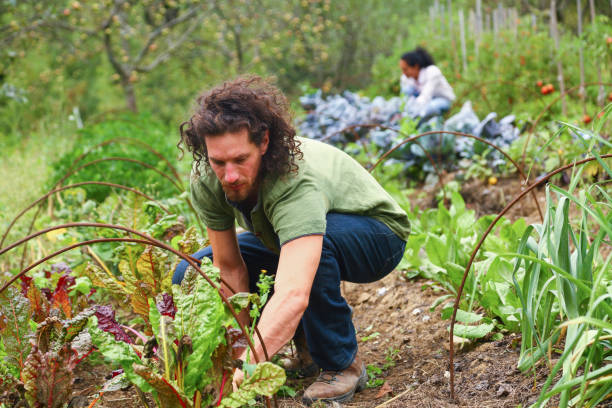The Resurgence of Community Gardens in Urban America
A green revolution is quietly taking root in America's cities. As urban dwellers seek connection with nature and their neighbors, community gardens are experiencing a remarkable renaissance. These shared spaces are transforming vacant lots into vibrant hubs of social interaction, sustainable living, and local food production. Read below to explore how this grassroots movement is reshaping urban landscapes and fostering a new sense of community in concrete jungles across the nation.

In recent years, cities like Detroit, New York, and Los Angeles have seen a significant increase in community garden initiatives. These projects often start with a group of neighbors identifying an unused plot of land and working together to transform it into a productive green space. Local governments, recognizing the benefits of these initiatives, have begun to support them through policy changes and resource allocation.
The Social Fabric of Urban Gardening
Community gardens serve as powerful catalysts for social interaction in urban environments where anonymity and isolation are often the norm. They create opportunities for intergenerational and intercultural exchanges, fostering a sense of belonging among diverse groups of people. Gardeners share not only tools and harvests but also knowledge, stories, and experiences.
Research has shown that participation in community gardens can lead to increased social capital and improved mental health outcomes. A study conducted by the University of Pennsylvania found that community gardens in low-income neighborhoods were associated with significant reductions in depression and anxiety among residents. The act of nurturing plants and working alongside neighbors provides a sense of purpose and connection that is increasingly rare in modern urban life.
Cultivating Food Security and Sustainability
In an era of rising food prices and growing awareness of the environmental impacts of industrial agriculture, community gardens offer a hyperlocal solution to food production. These gardens enable city dwellers to grow fresh, organic produce right in their neighborhoods, reducing food miles and increasing access to nutritious options in areas that might otherwise be food deserts.
Moreover, community gardens serve as living laboratories for sustainable urban practices. They demonstrate techniques for composting, water conservation, and organic pest control. Many gardens incorporate rainwater harvesting systems and solar panels, showcasing how urban spaces can be both productive and environmentally friendly.
Educational Hubs and Skills Incubators
Community gardens are evolving into informal learning centers where people of all ages can acquire valuable skills. Garden organizers often offer workshops on topics ranging from basic horticulture to advanced permaculture techniques. These educational opportunities extend beyond gardening, encompassing nutrition, cooking, and environmental science.
For children growing up in urban environments, community gardens provide hands-on experiences that connect them to the natural world and the food system. Schools are increasingly partnering with local gardens to integrate outdoor learning into their curricula, recognizing the multidisciplinary benefits of garden-based education.
Challenges and Future Prospects
Despite their many benefits, community gardens face challenges. Land tenure is often precarious, with gardens at risk of being displaced by development projects. Securing long-term access to land and resources remains a critical issue for many garden initiatives.
Additionally, as community gardens gain popularity, questions of inclusivity and gentrification arise. There is a growing recognition of the need to ensure that these spaces remain accessible to all members of the community, particularly in neighborhoods experiencing rapid demographic changes.
Looking ahead, the future of community gardens in urban America appears bright. Innovations in urban agriculture, such as vertical farming and aquaponics, are expanding the possibilities of what can be grown in limited urban spaces. Meanwhile, technology is facilitating better coordination among gardeners and connecting urban growers to wider networks of support and resources.
As cities continue to grapple with issues of sustainability, community resilience, and social cohesion, community gardens are likely to play an increasingly important role in urban planning and development. They represent a grassroots approach to addressing complex urban challenges, offering a model of community-driven change that resonates with many city dwellers’ aspirations for a more connected, sustainable, and fulfilling urban life.





